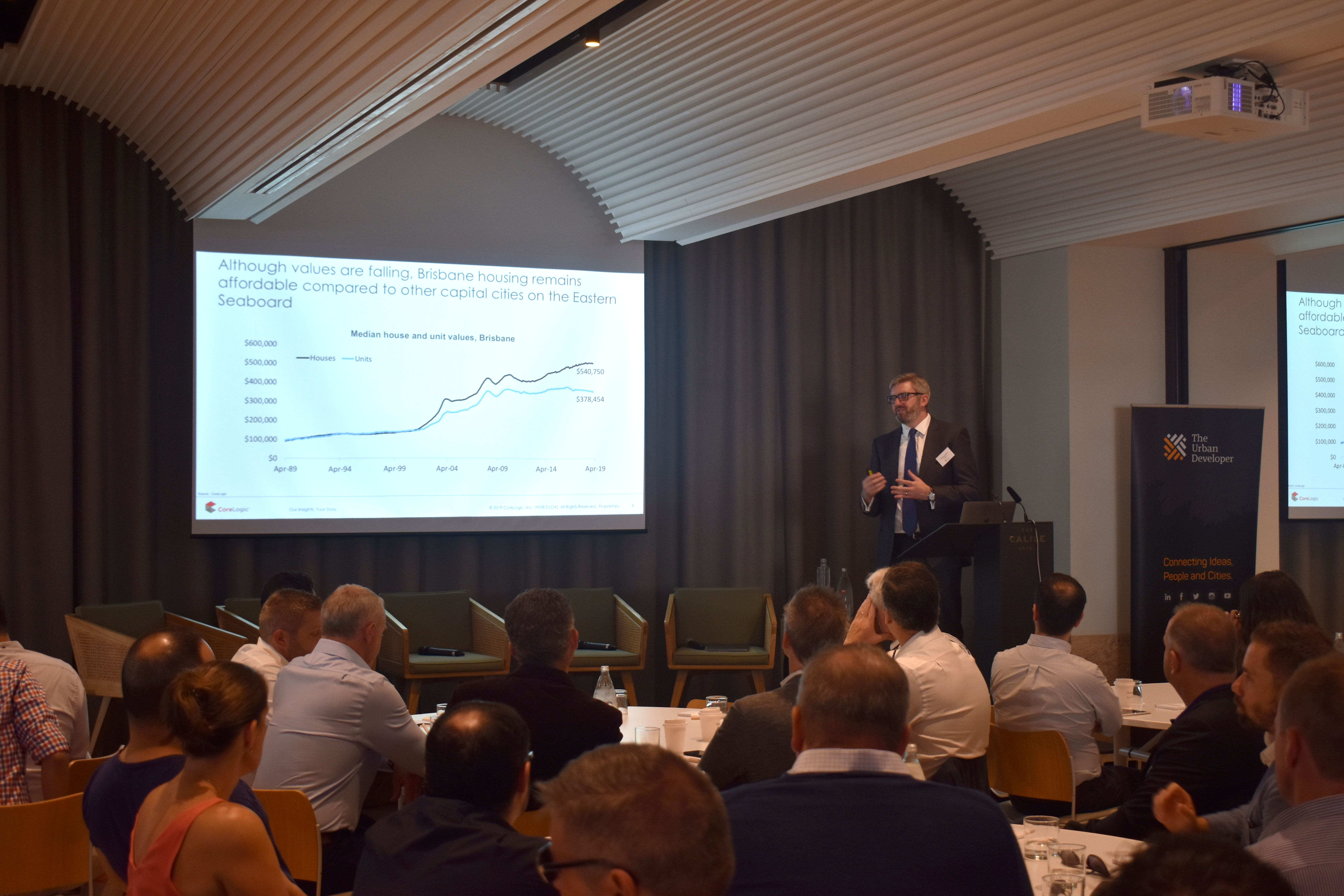What to Expect from Brisbane’s Residential Market
While conditions in Brisbane’s residential market are expected to remain weak for some time, there are green shoots as the market enters recovery mode and inches toward its next growth phase.
Expected peak-to-trough falls of up to 20 per cent in Sydney and Melbourne makes Brisbane’s residential market looks temperate in comparison.
Over the last 12 months, Brisbane house prices declined 1.9 per cent, led by larger falls in unit values of 2.5 per cent.
Speaking at The Urban Developer’s 2019 Residential Summit in Brisbane on Friday, Corelogic economist Cameron Kusher said the biggest concern for Queensland’s property market is sluggish economic growth and a concerning unemployment rate.
“If the economy can improve and [with] job creation lift there is a compelling argument to purchase property in Brisbane as opposed to Sydney or Melbourne.”
Credit availability will remain a key market determinant as borrowers face tight lending conditions, but improving affordability will help mitigate the impact of credit curbs to some extent, Kusher said.
Related: Brisbane Flat House Prices ‘Better Than a Fall’

Increasing net interstate migration and moderating apartment market declines will support the property market in the short term, while gross rental yields are rising at reasonably rapid rates when compared to recent lows.
The unprecedented apartment boom in Brisbane tipped the market well and truly into oversupply, but approvals have fallen substantially.
“And the number of dwellings under construction has been trending lower for some time,” Kusher said.
“Some caution around high-rise markets is warranted in light of high supply and less demand from foreign buyers and domestic investors however, new unit supply has moderated earlier in Brisbane than elsewhere.”
Related: Brisbane Apartment Market Set to Stabilise in 2019
Saved by sluggish growth
Housing market growth has been skewed toward Sydney and Melbourne since the global financial crisis, with Brisbane’s residential market experiencing minimal growth over the same period.
“The relative strength of the Sydney and Melbourne economies, strong migration into those cities and a relatively low supply of stock available for sale has supported this growth while these conditions have generally not been apparent in other capital cities,” Kusher said.
Settled sales transactions continue to trend lower for Brisbane, declining 5.6 per cent over the past year, while Brisbane property listings are taking longer to sell.
“There has been a large rise in the length of time it takes to sell a property in Brisbane over the past year,” Kusher said.
Brisbane suburbs that experienced the largest growth in house prices over 2018 are Karalee, Karana Downs, Brookfield, Ipswich and Riverhills while Carole Park, Eagle Farm, Logan Central and Fig Tree Pocket suffered the largest falls.
“It can be easy to forget the diversity across property market performance as some regions continue to deliver solid growth conditions while others drag averages lower,” Kusher said.














